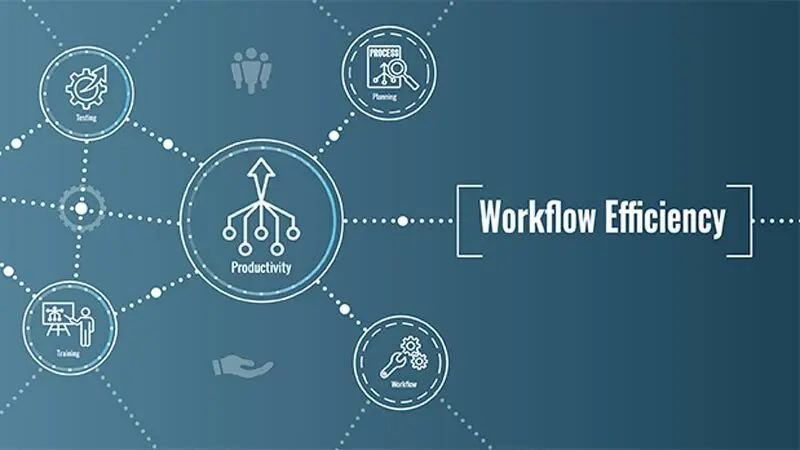3 Ways to Cut Overhead Today

When running a business, there are seemingly endless numbers to crunch and expenses to consider. One critical category is overhead costs. Overhead includes any expense needed to keep a business running day-to-day that isn’t directly related to providing a specific product or service. This could be renting office space, paying utilities, repairing a company asset such as a computer or vehicle, insuring the business and employees, buying equipment, paying salaries and various other costs depending on the type of business. Overhead costs are generally stable or fixed, meaning they are consistent from month to month.
It’s important to track overhead expenses and have a comprehensive understanding of how they impact a business in order to maximize profitability. Since they are generally paid monthly and stay largely fixed, they can be considered the minimum monthly amount needed to stay in business. Keeping these costs low means businesses see more profit, and can potentially reduce risk in the event of unforeseen events like a global pandemic.
In order to understand which expenses impact overhead and how to keep those numbers down, here are three ways businesses can consider cutting overhead today.
1. Audit Your Expenses
Understanding where to cut overhead expenses begins with knowing where you stand. A comprehensive audit is a great place to start. Owners should add up all the costs that are considered overhead and review the purpose and business value of each one to determine where cuts can be made. For instance, there may be fixed costs —location and equipment rental— that are non-negotiable, but others like cleaning and landscaping that could be renegotiated. Regardless of where your cuts come, getting organized, reviewing the numbers, and seeing where your savings are is a productive first step.
One type of cost contributing to overhead is technology – including software and hardware. Across industries, tech investments are increasing to meet evolving customer expectations and to take advantage of the best tools available. While technology solutions are crucial to business operations, they don’t need to break the bank to provide results. DaySmart Software has plans that fit every business from sole proprietor operations to Fortune 500 companies. No matter what plan they choose, each customer receives top-notch support, reliable onboarding and dedicated management.
DaySmart Appointments ensures businesses are getting the most return out of their software investment with support teams committed to helping with any technical challenges and advising on how to optimize use of the software. When auditing overhead expenses, businesses should take stock of what they’re spending on technology from company computers to reporting software and scheduling tools to determine if they’re getting what they pay for, or if there’s an opportunity to get more effective solutions at a lower price point..

2. Streamline Operations
Streamlining operations is another way to cut unnecessary overhead expenses to stop wasting time and start saving money. Often, management and employee routines rule the workplace, even if those habitual processes aren’t the most efficient or don’t create the best results. Analyzing operational processes and making improvements can lead to significant reductions in overhead costs. For instance, some businesses are still using outdated, inefficient methods of scheduling customer appointments. With DaySmart Appointments, businesses can cut overhead costs by revolutionizing their booking process to be more streamlined and use fewer resources. DaySmart Appointments allows customers to self-book appointments online from their preferred device. This way, no one has to spend all day tied to the phone rearranging schedules to find times that work for both customers and employees. DaySmart Appointments software displays available times to customers, the customer chooses the one that works best for them and the business is prompted to accept or decline the appointment. This simple solution takes the stress out of the booking process, so everyone involved is getting what they need at a fraction of the overhead cost.
DaySmart Appointments also helps streamline processes and cut overhead by easily integrating with existing programs businesses are using like Google Workspace, Microsoft 365, Mailchimp, Constant Contact and more. One of the most robust interfacing tools in the scheduling industry, DaySmart Appointments was designed to handle complex synchronization for data, triggers or updates between primary platforms and the scheduling backend.

3. Automate Administrative Tasks
Automation is crucial to cutting overhead costs. Administrative tasks are ideal opportunities to leverage automation as they are often repetitive and mundane. Automation increases productivity by outsourcing menial work that interrupts a business’s main priority–serving customers. Rather than spending time on something back-end like scheduling, employees can focus on interacting with customers to delight them with excellent service and products.
One administrative task that’s easy to automate is appointment reminders. These communications are crucial to decreasing no-show customers, increasing brand awareness and building customer relationships, but they are time consuming and monotonous for employees. Instead, businesses can use the DaySmart Appointments software to set automatic appointment reminders that include any information a customer may need, such as the office location, relevant paperwork to be filled out or updates about safety policies in place. With this process automated, employees will gain back hours each week to focus on more thought-provoking work that moves businesses forward.
Another administrative task that can be outsourced to automation is reporting functions. Manual reporting can be a stressful and time-consuming process of searching records for data points, calculating performance metrics and creating reports that are meaningful. With DaySmart Appointments, this process is automated to quickly turn stores of data into actionable insights for everyone at the business to utilize.
Cutting Overhead Doesn’t Mean Cutting Corners
When businesses attempt to cut overhead, they often struggle with the idea that things will get done less thoroughly – but cutting overhead doesn’t need to mean cutting corners. With the help of tools like DaySmart Appointments scheduling software, businesses can manage expenses and do work they are proud of.


